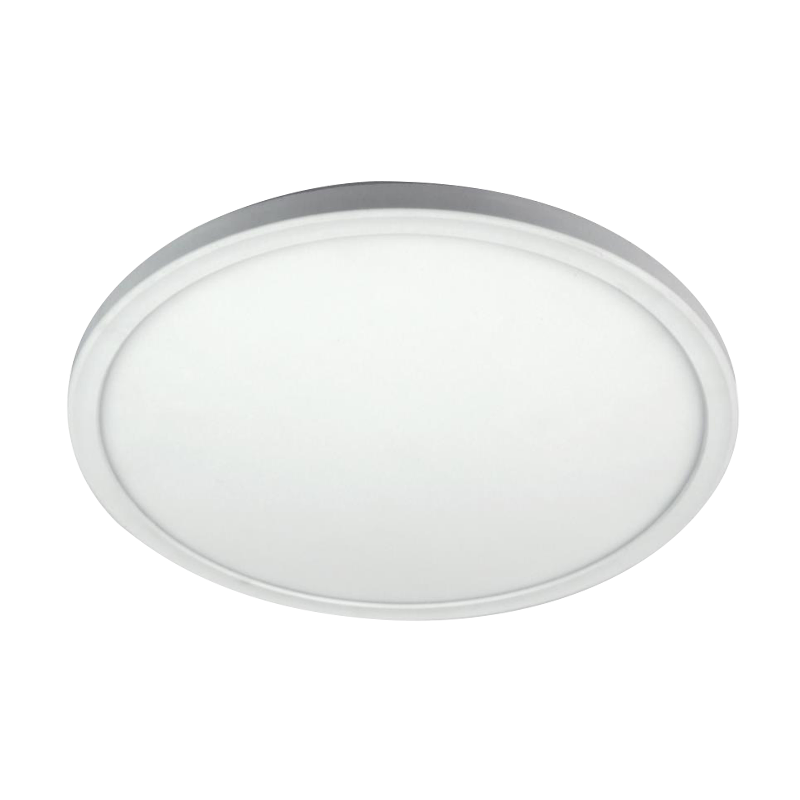As the mainstream indoor lighting equipment in contemporary times, LED ceiling lamps are widely used in residential, office, commercial, educational, medical and other fields with their advantages of high brightness, low power consumption and long life. In the actual installation and use process, the installation environment has a direct impact on the performance, life and safety of the lamp. Selecting a suitable installation environment and meeting relevant conditions is the premise for ensuring the long-term stable operation of LED ceiling lamps.
Ambient temperature requirements
The normal working environment temperature of LED ceiling lamps is generally between -20℃ and +45℃. Too high or too low temperature will affect the luminous efficiency of LED chips, the stability of driving power supply and the life of the whole lamp. In high temperature environments (such as near heat sources and direct sunlight), lamps are prone to problems such as accelerated light decay, shell aging, and overheating of the driver; in low temperature environments, the power supply startup performance may decrease, and some non-industrial grade capacitors will fail. In actual applications, lamps should be avoided from being installed directly in high-heat areas, such as above stoves, in enclosed ceilings, and near industrial heating equipment.

| Model No. | LG19G-220-18 | LG19G-290-24 | LG19G-400-36 | LG19G-500-48 |
| Power | 18W | 24W | 36W | 48W |
| Voltage | AC220-240V | |||
| CCT | 2700K/3000K/4000K/5000K/6500K | |||
| Luminous Efficiency | 90lm/W | |||
| Luminous | 1620lm | 2160lm | 3240lm | 4320lm |
| DF | >0.9/.09 | |||
| CRI | >80 | |||
| Beam Angle | 120° | |||
| IP Grade Protection | IP54 | |||
Ambient humidity requirements
LED ceiling lamps are sensitive to humidity, and the appropriate ambient humidity is generally between 20% and 85%RH. In humid environments (such as bathrooms, kitchens, and underground spaces), water vapor in the air can easily enter the interior of the lamp, causing circuit corrosion, short circuits, or increased light decay. Moisture-proof ceiling lamps with high protection levels (such as IP44, IP54, or even IP65) should be selected to ensure that the sealing ring structure is intact and the power supply and interface parts have waterproof coatings or waterproof sleeves. The lamp should not be directly exposed to the water vapor outlet, under the sprinkler system, or in areas where condensed water drips.
Electrical environment requirements
LED ceiling lamps must operate in an electrical system with stable voltage and frequency matching. Typical input conditions are AC220V±10%, 50/60Hz. Frequent voltage fluctuations, surge interference, or poor grounding will put pressure on the drive power supply and increase the failure rate. The installation site should have a good power distribution system and be equipped with a lightning protection module or surge suppressor. In areas where high-frequency interference equipment (such as industrial inverters, induction cookers, microwave ovens, etc.) exists, anti-interference lamps that have passed EMC testing must be used to avoid flickering or control failure due to electromagnetic waves.
Installation structure requirements
LED ceiling lamps must be installed on a stable and reliable load-bearing structure. The ceiling is usually required to be made of hard materials such as concrete, solid wood, and light steel keels, and the load-bearing capacity is not less than 4 times the total weight of the lamp. It must not be installed on non-load-bearing surfaces such as loose, peeling or structurally aged gypsum boards, aluminum-plastic boards, etc. The wall or ceiling must be flat and without tilt to avoid deformation, sliding or loose installation of the lamp body. For large-sized or high-weight lamps, structural auxiliary fixing methods such as metal expansion screws and additional mounting brackets should be combined.
Air cleanliness requirements
LED ceiling lamps should avoid being installed in spaces with high content of dust, oil smoke, and chemical corrosive gases, such as industrial workshops, kitchen oil fume areas, laboratories, or storage areas containing acid and alkali gases. Dust or oil covering the surface of the lampshade will reduce the light transmittance, increase the heat dissipation burden, and shorten the life of the lamp. Strong corrosive gases will accelerate the oxidation of circuit boards, solder joints, and heat dissipation materials, leading to electrical failures. In special environments, industrial-grade lamps with dust and corrosion resistance should be selected, and the lamp housing should be cleaned regularly.
Installation space requirements
When installing LED ceiling lamps, reasonable heat dissipation space should be left to avoid excessive temperature rise of the lamp body due to poor air circulation. It is recommended to keep a distance of at least 50mm around the lamp and the edge of the wall or ceiling. For lamps with external drive power supplies, sufficient drive installation space should be reserved to facilitate heat dissipation and ventilation. Lamps should not be completely wrapped in closed ceilings or decorative components to prevent heat accumulation from overheating and damage to electronic devices.
Adaptability of lighting space
LED ceiling lamps should be selected according to the space size, ceiling height, and lighting requirements of the use area. In spaces with low floor heights (below 2.5 meters), surface light source type and low glare structure lamps should be selected to avoid oppression or visual fatigue; in high-altitude large-area lighting places, high luminous flux and large light distribution angle lamps should be used to improve illumination uniformity. The installation environment should have no obvious reflective surfaces or strong light-absorbing materials to ensure maximum lighting efficiency.